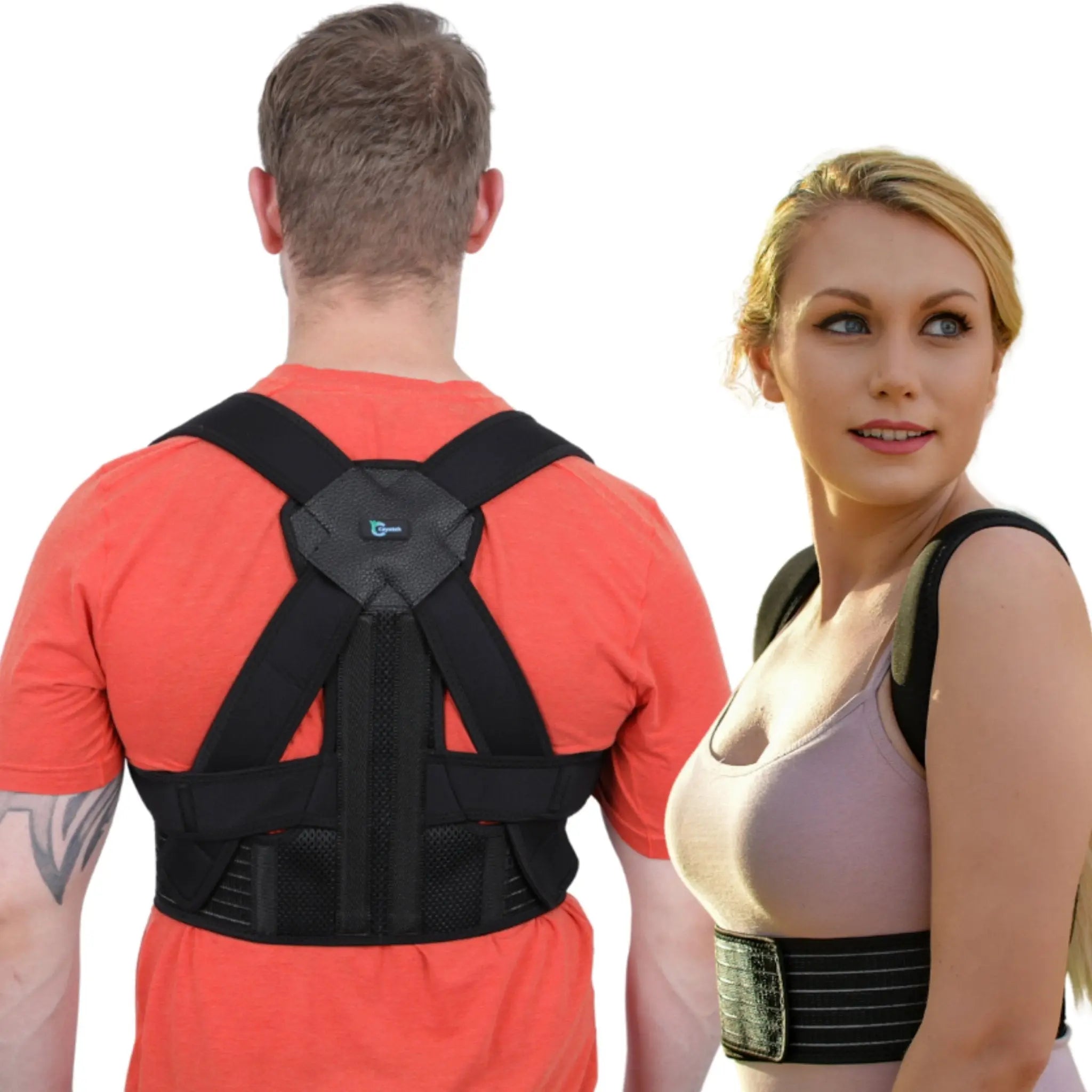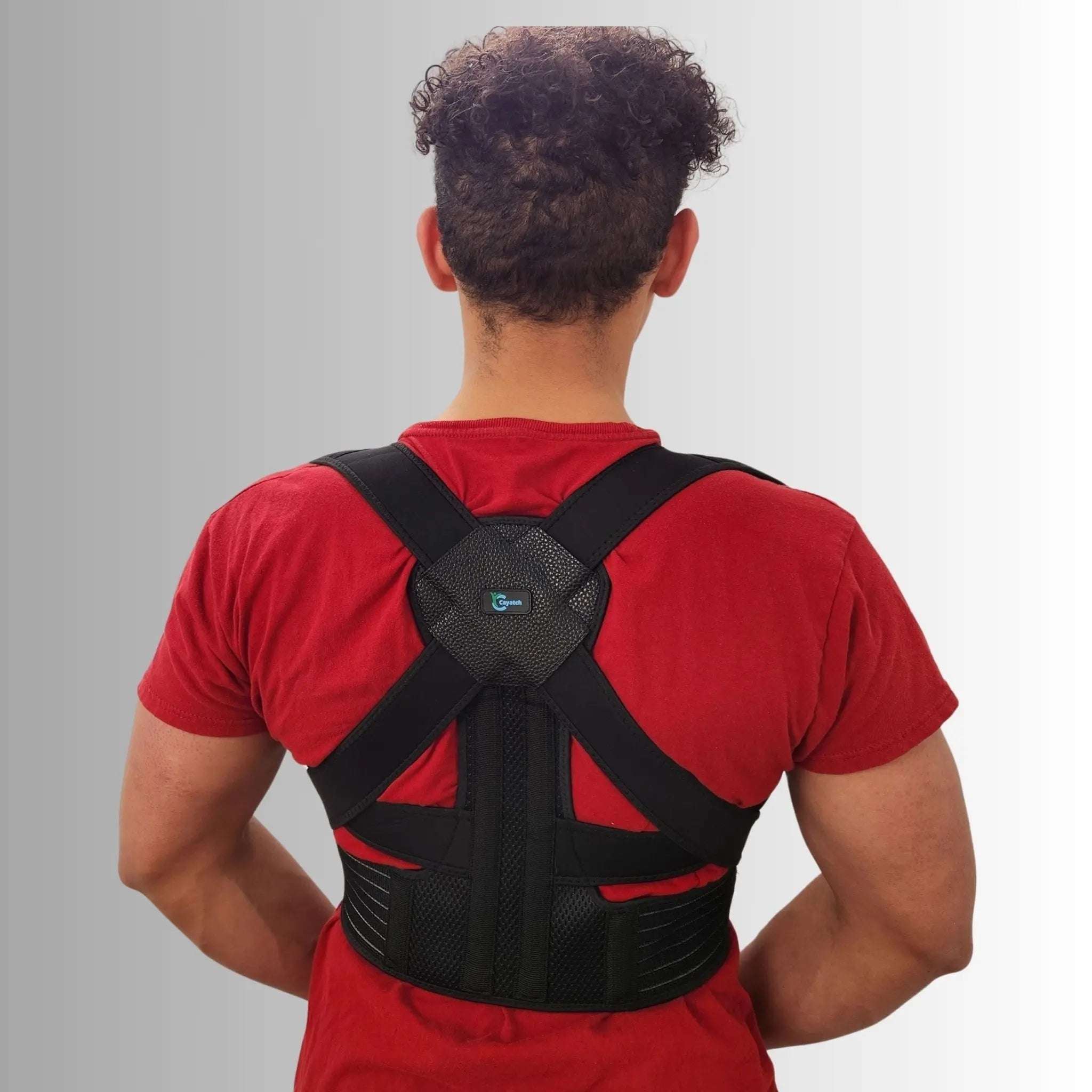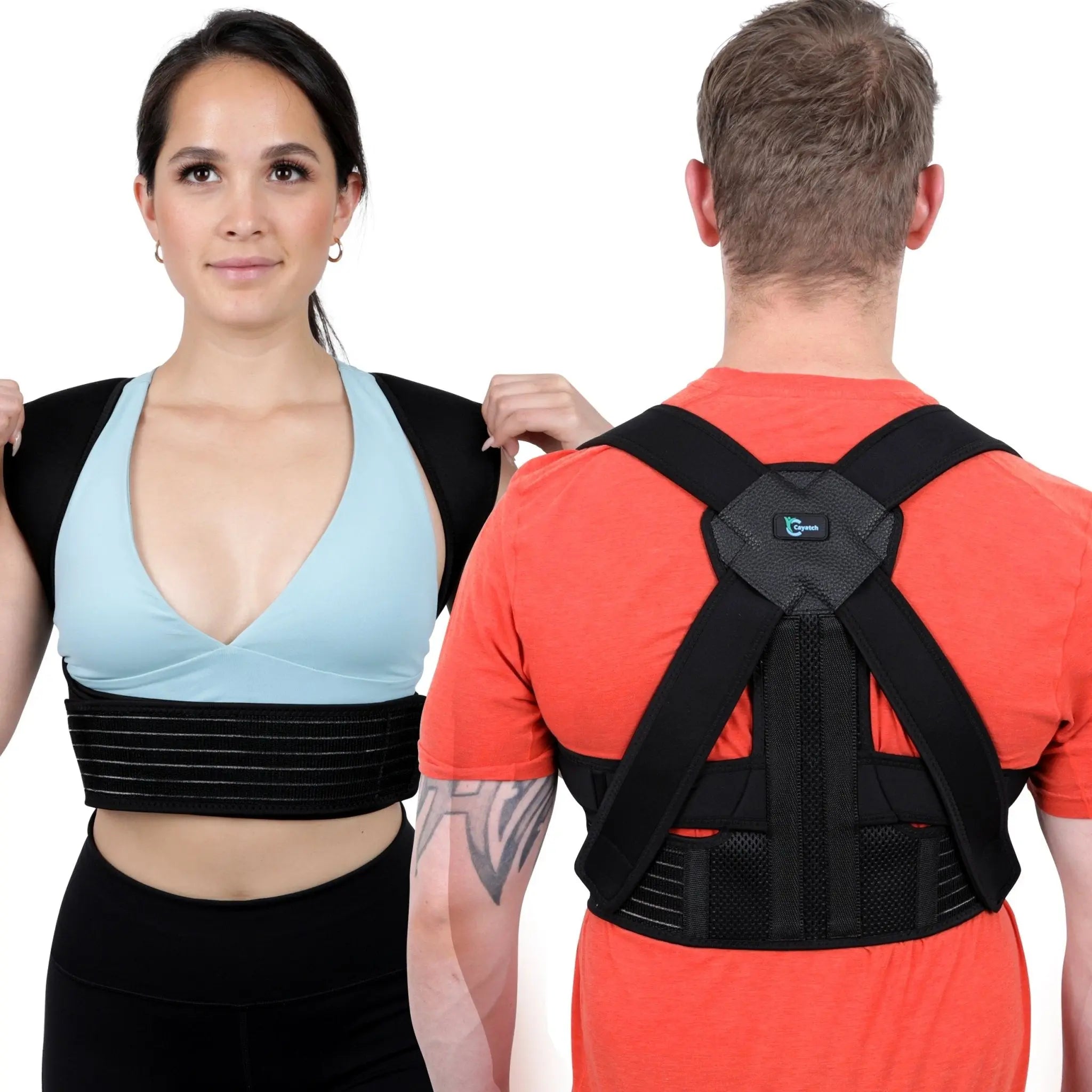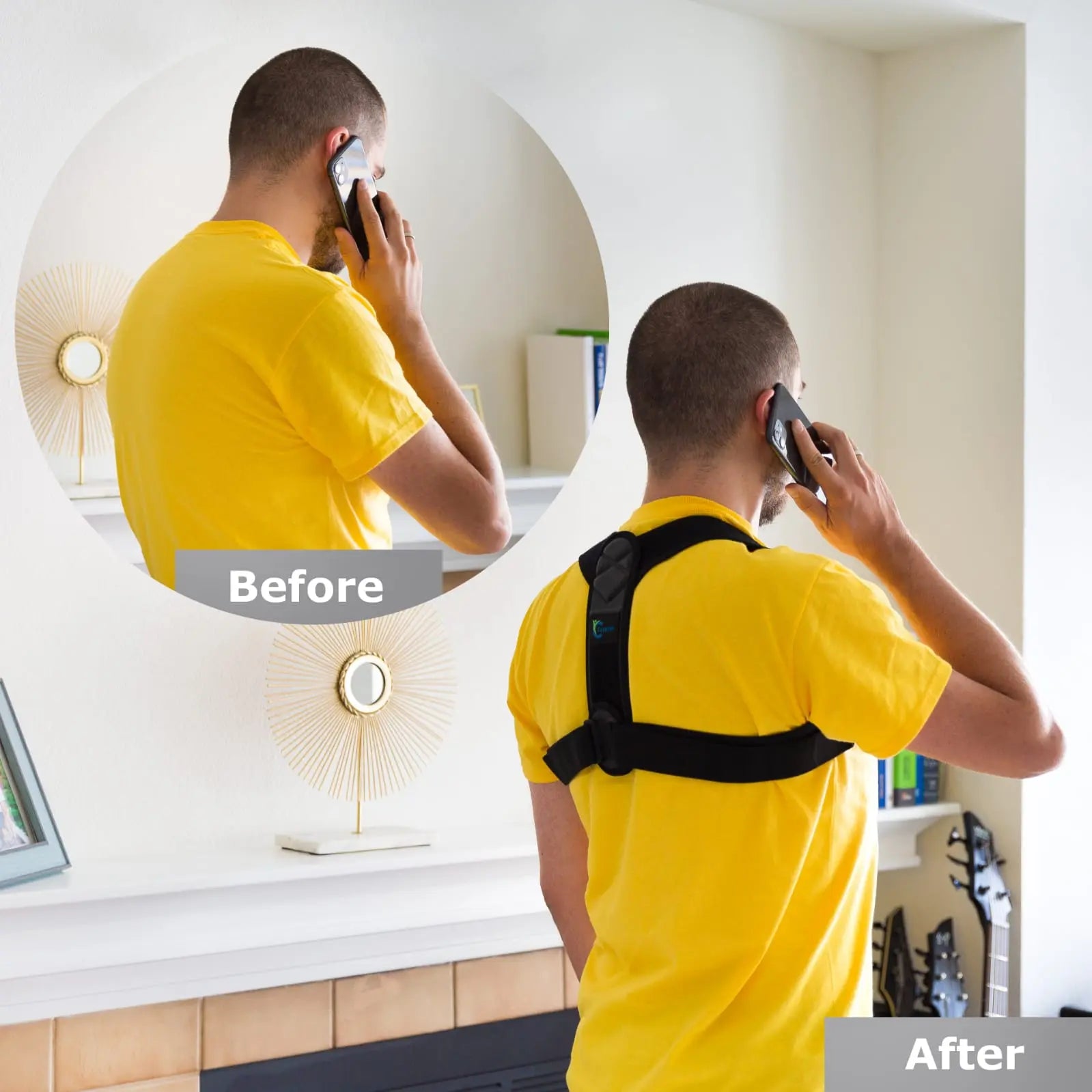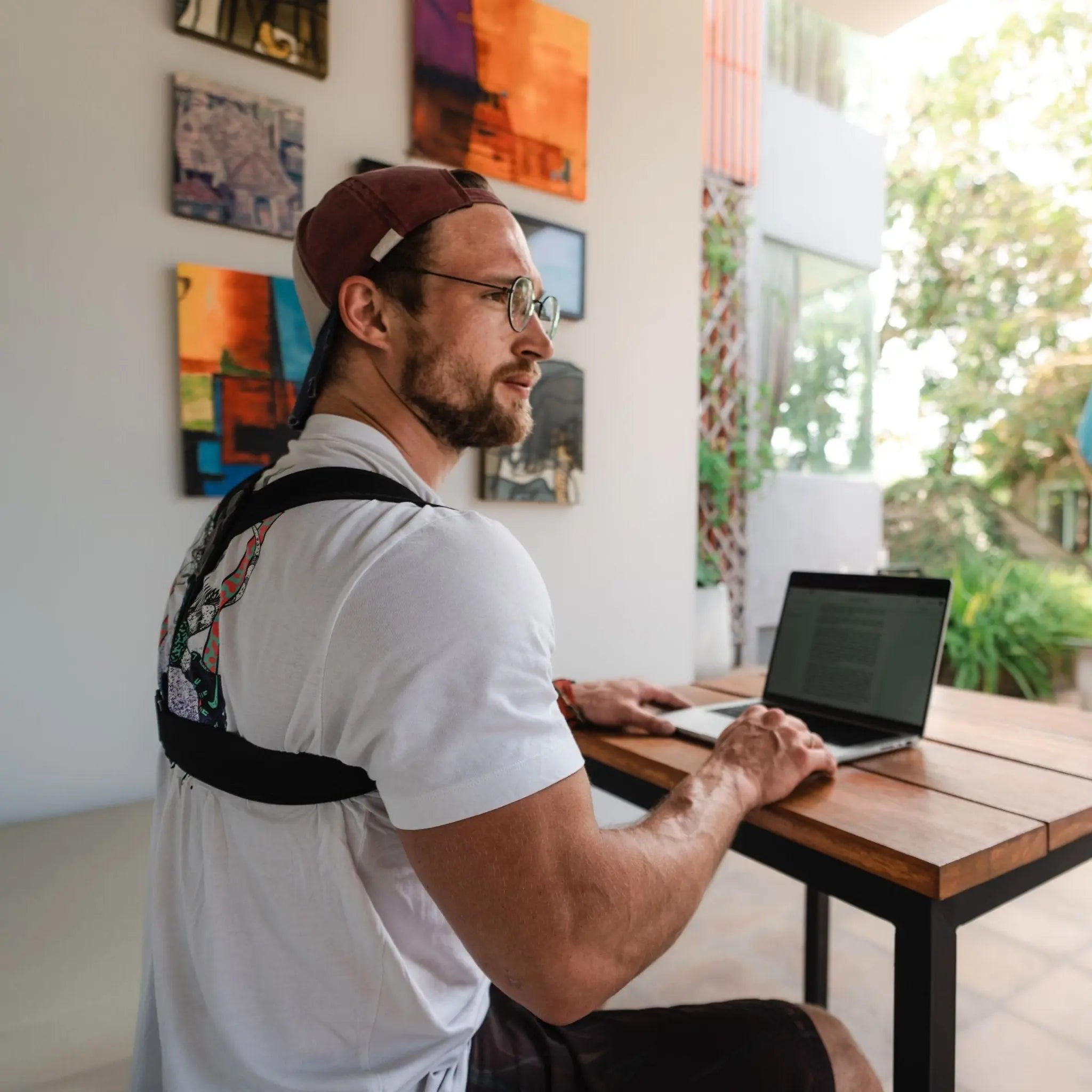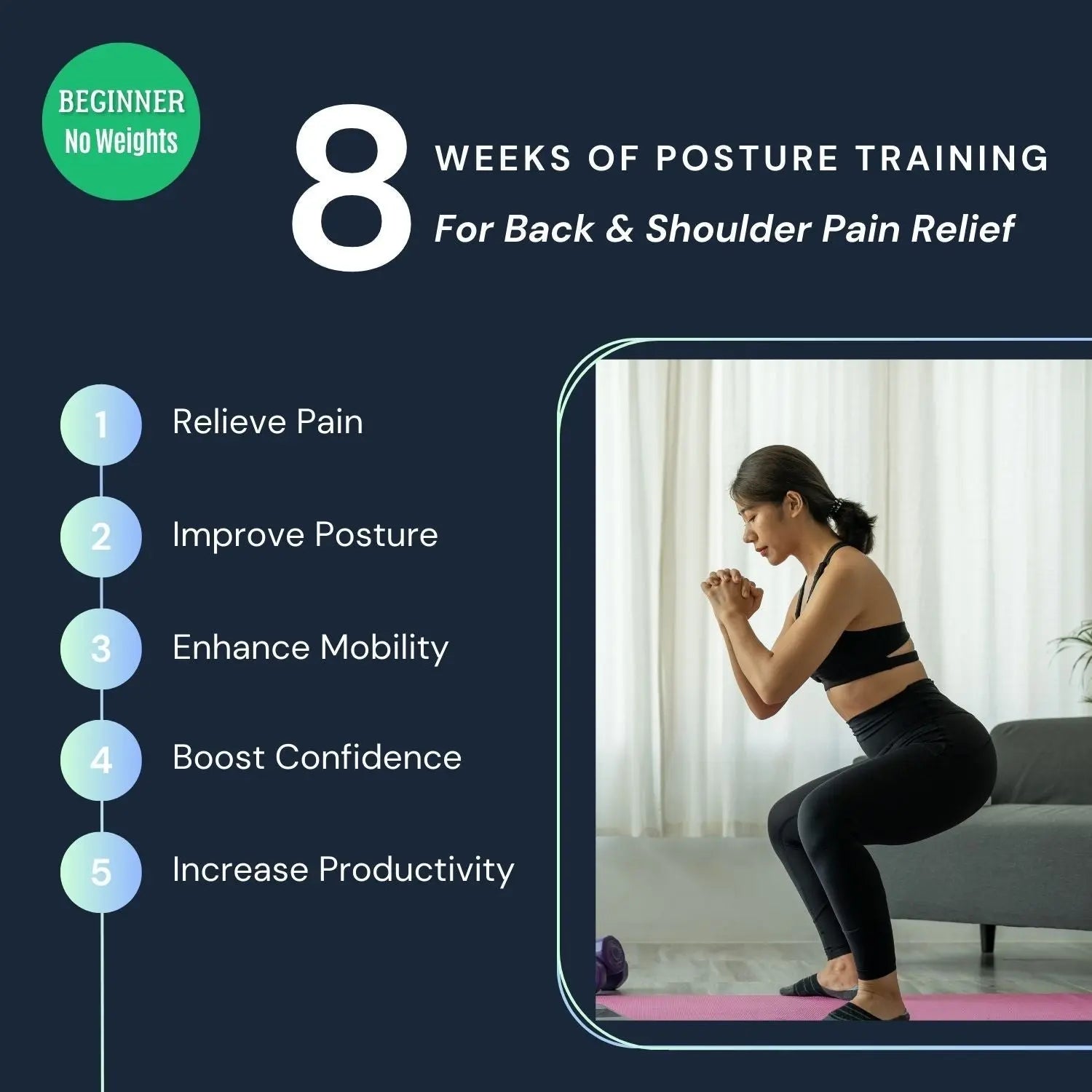How To Fix Sway Back Posture? Things That Actually Work

Lower back pain is a common symptom of swayback posture, a form of bad posture. The signs are rounded shoulders, a forward-leaning pelvis, and an overall bent back part. Long-term aches and pains are more common in the lower back than in other body parts.
Long-term, it may interfere with one's ability to maintain balance and move around easily. In this blog post, we’ll learn everything in-depth about sway back posture. We’ll focus on the symptoms, causes, and solutions to fix the sway-back posture.
What is Sway Back Posture?
Sway back posture means an excess arch in the back area due to lordosis. Christopher M. Norris says when one stands with a forward-tilted pelvis, their thighs will stick out, and their stomach will extend.
The form of spinal curve that defines sway back posture. It shows a curved upper back. Sway back posture has higher effects on the pelvic and lower back.
There are some known risks related to slouching over long periods. A common symptom is back discomfort. It may also cause you to feel restless and uneasy. Eighty percent of the population may get low back pain at a certain point.
Symptoms of Sway Back Posture
When the lower back is excessively curved inward, the result is a sway-back posture. Back pain, slouching, and visible buttocks are typical signs. Muscle imbalances and poor posture are two likely causes of this postural issue.
Here are some symptoms of sway back posture:
- You're raising your neck and head forward at an abnormal level.
- Your hips moved up ahead.
- Your backside is showing.
- Laying down with more room under your lower back.
- When you have sway back, your hamstrings will tighten up.
- Your pelvis may turn forward of your body.
What Causes Sway Back Posture
Long periods of sitting in a bad position can also weaken your core muscles and legs. Weakness in these muscles over time can lead to swayback and other postural issues.
Some other factors cause swayback, such as:
1. Muscle Imbalances
A lack of core strength or tight muscles in the back may cause swayback. As a result of this muscle disorder, the pelvis shifts ahead, worsening the swayback in the lower back.
2. Genetics
Sometimes, genetic factors are responsible for bone shape and weight balance. Certain people are more at risk for postural problems.
3. Pregnancy
Pregnant women are likely to have a sway back. Because their bodies change to fit a growing child. Hormonal changes may alter both joint flexibility and muscle tone.
4. Obesity
Researchers in 2016 saw that higher abdominal fat causes the poor stability of posture and lordosis risk that occurs in obese young people.
5. Poor Posture Habits
With time, a sway-back posture can develop from constantly standing or sitting in an incorrect posture. This can be with the lower back bent or the thighs protruded.
6. Structural Abnormalities
Spinal abnormalities are a possible effect of swayback. This happens because of an excessive inward bend in the lower spine. Therapy and better posture might help.
7. Muscular Weakness
Muscular weakness and abdominal area are common results of sway back. It occurs when the spine's natural curve changes. Muscles get weaker and less stable as a result of extra pressure.
How to Correct Sway Back Posture
Excessive spinal curvature, a sign of sway back posture, is related to various health problems. To improve your posture, you should work on exercising and stretching muscles.
These are seven exercises that may help improve your posture:
1. Hip Flexor Stretches
Hip flexor muscles may worsen by pulling the pelvis and raising the spine's curve. Hip flexor stretches are a great method to improve your posture. This loosens up those tight hip flexors and lessens the pain that comes with them.
Step-by-step guide:
- Bend forward at the waist and kneel with a single foot in front.
- Maintain a straight posture and tight core.
- Lean forward slightly so you can feel the stretch at the hip of your kneeling leg..
- Do this with the other side.
2. Quadriceps Stretches
Stretching the quadriceps regularly is important. These stretches help to minimize tightness in the quadriceps. This helps the spine and pelvis to realign themselves into a more natural position.
Step-by-step guide:
- Raise your hips and place your feet shoulder-width apart.
- Pull your right heel towards by grabbing your right ankle with your rear hand.
- Hold your legs lined up and your knees together.
- Keep your back straight and your shoulders back.
3. Hamstring Stretches
As tight hamstrings cause them to sway back, stretching them might be beneficial in correcting your posture. You should also talk to a doctor or a therapist to get specific advice on fixing your posture.
Step-by-step guide:
- Keep your feet at their hips and your back straight.
- Straighten one leg out in front of you.
- Reach your hands down toward your feet as you slowly kneel. Maintain a straight spine while you act.
- Repeat 2-3 times.
4. Core Strengthening Exercises
By strengthening the muscles that control the spine, core stability workouts can help correct this posture problem. If further problems arise, try to take advice from the therapist.
Step-by-step guide:
- Position yourself on your back with your knees bent, your core active, and your pelvis tilted.
- Lay on your back, knees bent, hips up, and lower yourself.
- Keep a push-up form for 20-30 seconds, balancing on your elbows.
- Begin on your hands and knees, inhale to create an arch in your back, and release to round it.
- While lying on your back, straighten your legs and lift one of them a few inches above the ground.
5. Glute Strengthening Exercises
To address this issue, working on glute strength can assist in supporting the pelvis and boosting general posture. This could be a very effective exercise if someone maintains this regularly.
Step-by-step guide:
- Start lying on one's back with one's legs bent.
- Raise one leg off the surface and keep the other foot down.
- Get on the other side with your knees bent to a 90-degree.
- Raise one knee to the side while keeping the foot flexible.
- Stand with your feet hip-width apart, bend at the knees, and then push back up to the beginning position.
6. Lower Back Strengthening Exercises
Your spine will be more stable, and your posture will improve if you work on developing your lower back and abdominal muscles. This will develop the posture and the stability.
Step-by-step guide:
- Lie on your back, contract your core muscles, and press your lower back onto the floor.
- Lift your hips above the floor and squeeze your glutes as you go on your bridge movement.
- Do the cat-cow stretching on your palms and knees by shifting between an arched and curved back posture.
- Lift your torso, arms, and feet off the ground while lying on your stomach.
- Keep a straight path from your head to your heels while in a position for push-ups.
- Keep your hands and knees while extending a single arm and the opposing leg.
7. Postural Awareness Exercises
Improving your posture will require you to work on strengthening your weak joints and stretching your tight ones.
Keep in mind that correcting a swayback posture will require time and effort. If you need specific advice, a doctor or therapist can help.
Step-by-step guide:
- Lower your lower back on the floor as you lie with your legs bent and your feet on the ground.
- Put one knee in front of the other and thrust your thighs forward.
- Stretch your toes while sitting with one leg straight and the other foot on your inner thigh.
- Repeat the cow pose.
- Maintain your spine and pelvis by doing planks and side planks.
- Pay attention to how you stand and sit.
Frequently Asked Questions (FAQs)
How long does it take to fix swayback?
The duration required to fix swayback depends on the severity of the condition and how fast your body responds to the treatment.
With consistent exercise, it could take anywhere from 14 days to a couple of months to cure.
Why is sway-back bad?
The increase in the posterior tilt of the pelvis causes increased stress in the lumbar area and develops strain on the spine, causing back pain and discomfort.
It can lead to back and hip injuries, with a chance of musculoskeletal damage.
Is swayback curable?
Proper treatment, including postural correction, exercise, and physical training, can definitely cure swayback in no time.
You need to be consistent during the physical training period if you aim to get rid of it within a few months.
Does sway back affect height?
Lordosis does not reduce height, but it does create the illusion of having a shorter stature due to the exaggerated curvature of the spine.
But in cases of hyperlordosis, a height reduction of 0.25 inches- 2 inches is noticeable.
Wrapping Up
In a sway-back posture, the hips are jutted forward, and the spine curves overly. The person seems to be bent over even while standing up straight.
Weak or tight muscles are a common cause of swayback posture. To fix sway-back posture and keep up healthy postural habits, a PT can create a program to your needs. See a doctor to get an official diagnosis of swayback and find out what's causing it if you're unsure.























